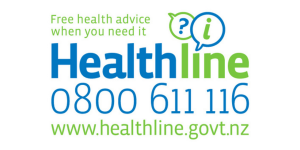Wishing everyone a safe and happy Christmas and New Year – Meri Kirihimete from the Healthify team.
Aristocort cream and ointment
Also called triamcinolone acetonide cream or ointment
Key points about Aristocort®
- Aristocort cream or ointment contains a moderately potent steroid.
- It’s used to reduce inflammation and itchiness caused from skin conditions such as severe eczema that hasn't responded to other treatments or psoriasis.
- Find out how to use it and possible side effects.
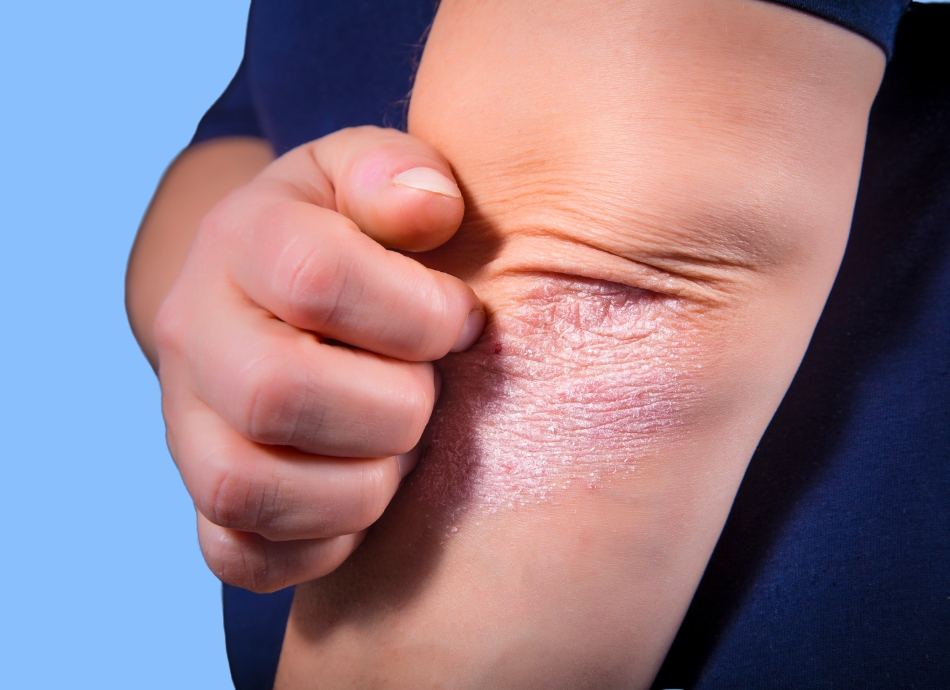
Aristocort® belongs to a group of medicines known as topical steroids.
It contains triamcinolone acetonide, a moderately potent steroid that helps to relieve inflammation and itching.
It’s used for skin conditions such as severe eczema or dermatitis that haven't responded to other treatments, and psoriasis.
The cream is usually best for treating moist areas of skin, as creams absorb into the skin well.
The ointment tends to be greasy and is usually best for treating areas of skin that are dry or thickened. Ointments have the lowest chance of burning and stinging when applied.
In Aotearoa New Zealand, Aristocort cream and ointment both contain 0.02% of triamcinolone acetonide and are available on a prescription written by a prescriber.
Use topical steroids as advised by your healthcare provider. They will explain where, how often and for how long to apply the medicine.
- Wash your hands before and after applying (unless treating your hands).
- Don’t use on broken, infected or weeping skin unless advised.
- Don’t use near your eyes, mouth or genitals unless directed.
- If using a moisturiser, apply the moisturiser 10 minutes before applying Aristocort.
- Creams or ointments are rubbed gently into the affected skin until they have disappeared.
- The amount of topical steroid you should apply is measured in fingertip units (FTUs). One FTU is the amount of topical steroid that's squeezed out from the tube along an adult's fingertip (the distance from the tip of the adult index finger to the first crease) as shown in the image below.
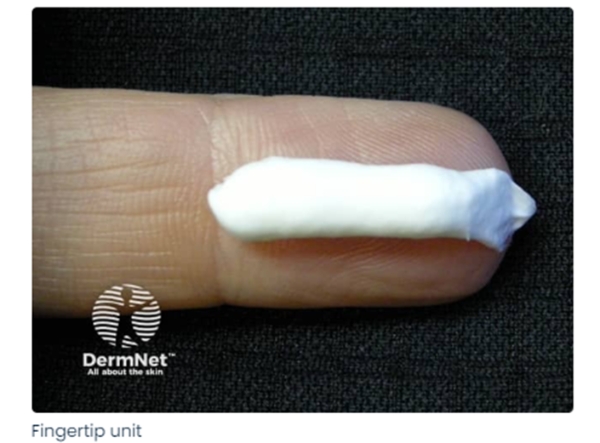
Image credit: DermNet, NZ(external link)
- 1 FTU is enough cream or ointment to cover an area the same size as 2 adult handprints (palms and fingers).
- You'll need to use enough topical steroid to get a response, then you can use a less potent product to control the condition.
- If you don't get a response after 7 days, instead of using it more often or using it for a long time, talk to your healthcare provider.
- Your healthcare provider may ask you to cover treated areas. Covering the treated area after applying a topical steroid increases the absorption of the steroid but may also increase side effects.
-
If you have frequent skin flare-ups you may be advised by your healthcare provider to use topical steroid treatment for a short time, to prevent flare-ups. This is also called ‘pulse dosing’ or ‘weekend treatment’ where you apply the topical steroid for 2 days a week during remission (between flares).
The diagram below gives some guidance on how many fingertip units of steroid cream are required for adults.
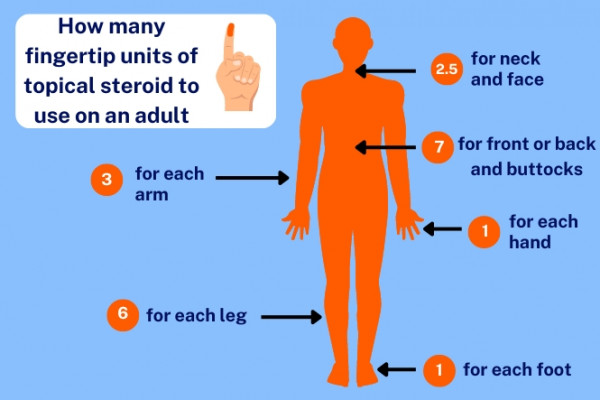
Image credit: Healthify He Puna Waiora
For guidance on how many fingertip units to use in children, read more about fingertip units when applying topical steroids to children(external link).
Video: How to use topical steroids
(Guy's and St Thomas' NHS Foundation Trust, UK, 2017)
Soak and smear method
If your topical steroid isn’t helping your skin condition, or if your symptoms are severe, you can try a method called ‘soak and smear’. Here is some guidance on how to do it:
- Have a lukewarm bath about 20 minutes before you go to bed. Gently pat your skin dry so it stays slightly damp.
- Smear a generous amount of topical steroid onto the affected areas.
- Wear loose-fitting clothes.
- In the morning, moisturise your skin.
If you find you need to use topical steroids every day for more than 2 weeks, or more than 3 times a week for most weeks, talk to your healthcare provider.
Like all medicines, Aristocort cream and ointment can cause side effects, although not everyone gets them. If you're worried about any symptoms, talk to your healthcare provider. The following information offers some guidance but doesn't include all possible side effects.
Tell your healthcare provider if these side effects bother you
- Burning or stinging feeling: Talk to your healthcare provider if it's uncomfortable.
- Thinning of the skin: It can happen if a covering is used after treatment or if topical steroids are used often on a large area or long-term. It's less likely to occur with a short course. If it does happen, it often goes away when the treatment is stopped.
- Permanent stretch marks, bruising, discolouration, thin spidery veins: These aren't common and may occur with long-term use of topical steroids.
Read more about medicines and side effects and reporting a reaction you think might be a side effect.
The following links provide further information on Aristocort:
Triamcinolone (skin cream or ointment)(external link) New Zealand Formulary Patient Information
Aristocort®(external link) Medsafe Consumer Medicine Information, NZ
Brochures
Identifying topical corticosteroids [JPG, 1.6 MB] Health New Zealand | Te Whatu Ora, NZ, 2025
Medicines and side effects [PDF, 91 KB] Healthify He Puna Waiora, NZ, 2024
5 questions to ask about your medications(external link) Health Quality and Safety Commission, NZ, 2019 English(external link), te reo Māori(external link)
References
- Topical steroids(external link) New Zealand Formulary
- Aristocort®(external link) Medsafe datasheet, NZ
- Topical corticosteroids for childhood eczema – clearing up the confusion(external link) BPAC, NZ, 2021
- Topical steroids for eczema(external link) Patient Info, UK, 2024
- Choosing a topical treatment for patients with chronic plaque psoriasis(external link) BPAC, NZ, 2017
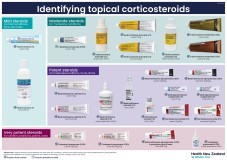
Identifying topical corticosteroids
Health New Zealand | Te Whatu Ora, NZ, 2025
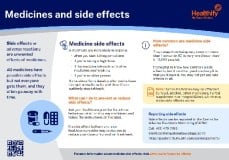
Medicines and side effects
Healthify He Puna Waiora, NZ, 2024
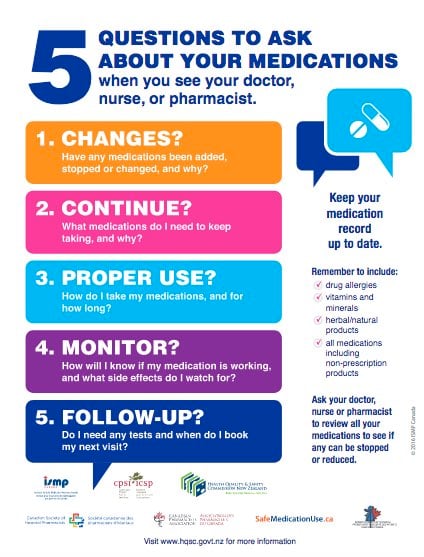
Health Quality and Safety Commission, NZ, 2019 English, te reo Māori
Credits: Healthify editorial team. Healthify is brought to you by Health Navigator Charitable Trust.
Reviewed by: Angela Lambie, Pharmacist, Auckland.
Last reviewed:


